

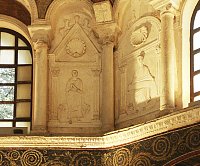
|
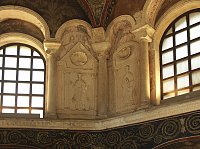
|
The second register with stucco figuresRepresented here in niches flanking the windows are Hebrew prophets who prophesied the coming of the Messiah. |
| The dome springs from this level, although one is unaware of the dome from the exterior. | 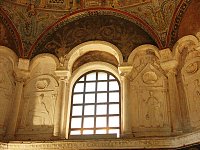
|

|
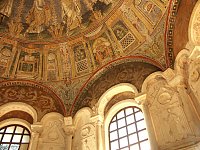
|
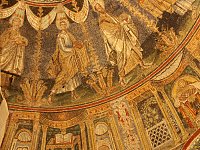
|
The first ring of the domeAt the center of each of four octagon faces in the lower part of the dome an altar is represented with a Gospel displayed prominently. Alternating with the altars are elaborate thrones under baldacchinos. |
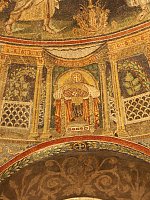
|
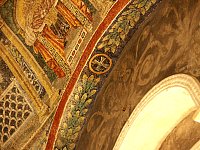
| |
The second ring of the dome with twelve Apostles in processionThese figures carry crowns of martyrdom and are arranged decoratively between draped curtains and floral garlands. While later mosaics in Ravenna are more clearly influenced by Byzantine art, here much of classical illusionism remains, evident especially in the three-dimensional forms of the Apostles and the fact that they cast shadows. Although they are elongated unnaturally, the faces do seem individualized--a trait more characteristic of classical art. | ||
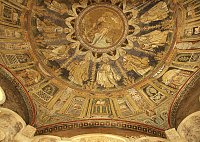
|
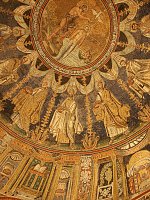
|
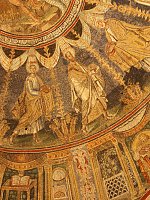
|
Center of the dome: Baptism of JesusThis scene underlines the importance of the building and its function--to initiate Christians into the fold of the Saved through the sacrament of baptism. Their souls will be cleansed of sin and they will be assured of salvation and rebirth in Heaven with Christ. | ||
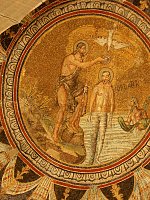
|
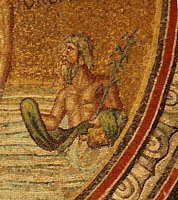
|
The river god, Jordan (labeled above him)Here is a reminder of Classical art where river gods were personified. Although classical art was usually illusionistic, here the baptism is represented with a gold background, not a blue sky. Thus, these mosaics illustrate a mixture of styles. Later works in Ravenna will be more fully Byzantine. See San Vitale and Sant'Apollinare in Classe, for example. |
 Click here to return to index of art historical sites.
Click here to return to index of art historical sites.
 Click here to return to index of artists and architects.
Click here to return to index of artists and architects.
 Click here to return to chronological index.
Click here to return to chronological index.
 Click here to see the home page of Bluffton University.
Click here to see the home page of Bluffton University.

